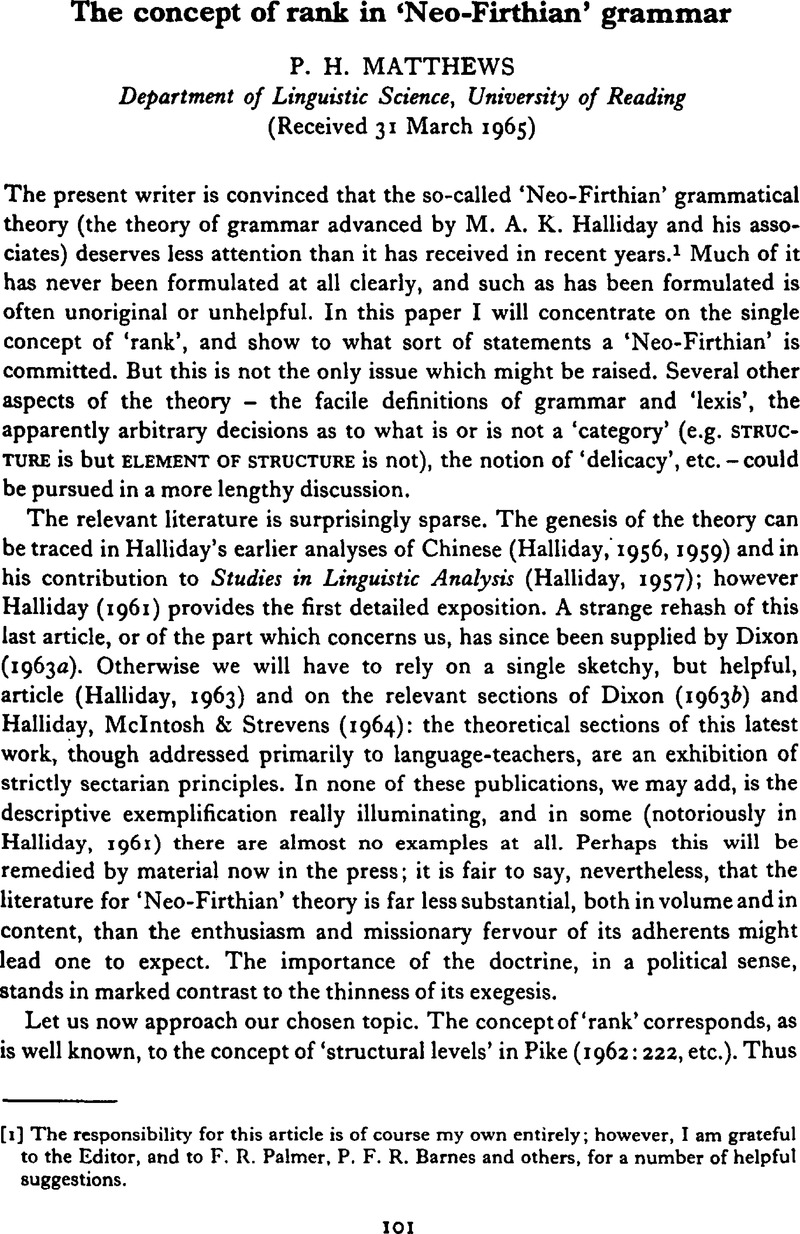Crossref Citations
This article has been cited by the following publications. This list is generated based on data provided by Crossref.
Anderson, John
1968.
Ergative and nominative in English.
Journal of Linguistics,
Vol. 4,
Issue. 1,
p.
1.
Matthews, P.H.
1969.
Coordination: its implications for the theory of general linguistics.
Lingua,
Vol. 23,
Issue. ,
p.
349.
Anderson, John
1969.
A note on ‘rank’ and ‘delicacy’.
Journal of Linguistics,
Vol. 5,
Issue. 1,
p.
129.
Allerton, D.J.
1969.
The sentence as a linguistic unit.
Lingua,
Vol. 22,
Issue. ,
p.
27.
James, Carl
1974.
James Muir, A modern approach to English grammar: an introduction to systemic grammar. London: B. T. Batsford, 1972. Pp. 141..
Journal of Linguistics,
Vol. 10,
Issue. 1,
p.
210.
Butler, C. S.
1979.
Recent Developments in Systemic Linguistics.
Language Teaching & Linguistics: Abstracts,
Vol. 12,
Issue. 2,
p.
71.
Butler, Christopher S.
1985.
The applicability of systemic theories.
Australian Review of Applied Linguistics,
Vol. 8,
Issue. 1,
p.
1.
Huddleston, Rodney
1988.
Constituency, multi-functionality and grammaticalization in Halliday's Functional Grammar.
Journal of Linguistics,
Vol. 24,
Issue. 1,
p.
137.
Butler, Christopher S.
1989.
Systemic models: unity, diversity and change.
<i>WORD</i>,
Vol. 40,
Issue. 1-2,
p.
1.
Fawcett, Robin P.
2000.
In place of Halliday's ‘verbal group’.
<i>WORD</i>,
Vol. 51,
Issue. 3,
p.
327.
McGregor, William B.
2003.
A Fundamental misconception of modern linguistics.
Acta Linguistica Hafniensia,
Vol. 35,
Issue. 1,
p.
39.
Yang, Bingjun
2004.
Towards the criteria of non-finite clause identification: a systemic-functional approach.
Language Sciences,
Vol. 26,
Issue. 3,
p.
233.
Rudge, Luke A.
2020.
Situating simultaneity: an initial schematization of the lexicogrammatical rank scale of British Sign Language.
<i>WORD</i>,
Vol. 66,
Issue. 2,
p.
98.


